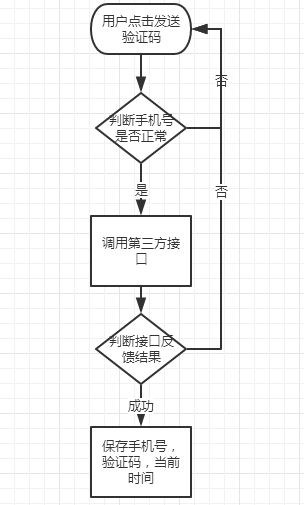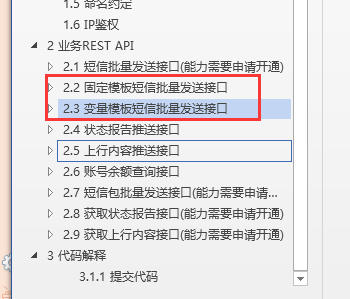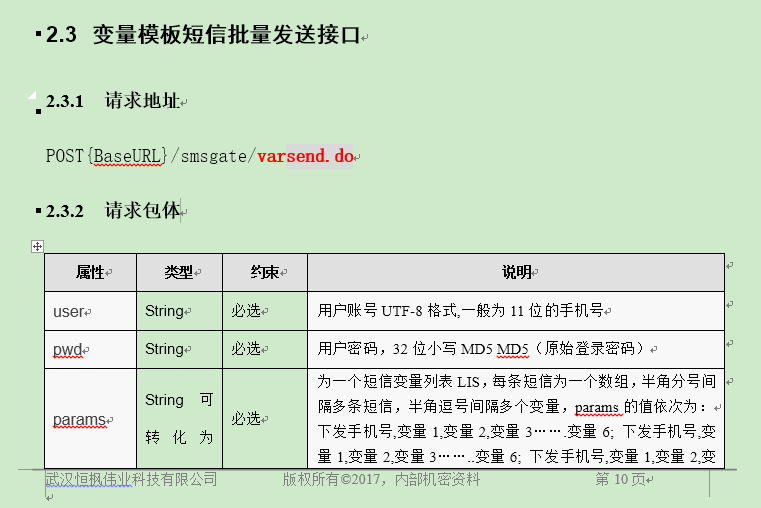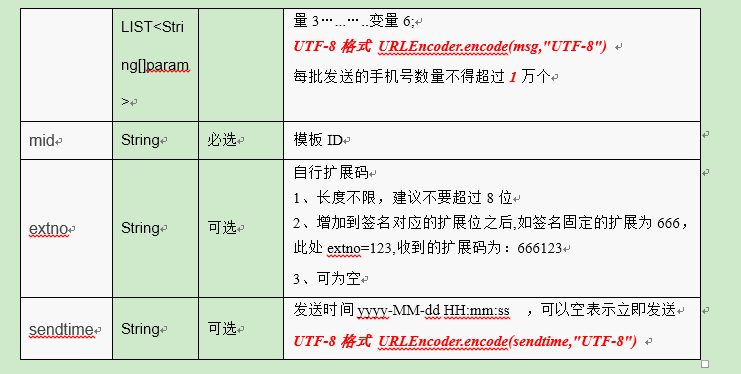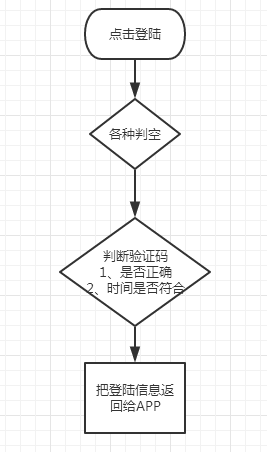Java 手機驗證碼
傳送簡訊驗證碼+登陸功能
置頂 2017年12月14日 19:39:55 Elsa曉冰 閱讀數:5100 標籤: 簡訊驗證碼登陸更多
版權宣告:本文為博主原創文章,未經博主允許不得轉載。 https://blog.csdn.net/binggetong/article/details/78805992
業務:
手機端點擊發送驗證碼,呼叫第三方平臺(我們用的是“任信了”平臺)的介面,去給手機發簡訊驗證碼。
過程:
程式碼:
-
/** -
* 傳送簡訊驗證碼 -
* @param json 前臺傳入電話號碼 -
* @return 返回傳送結果向前臺 -
*/ -
@RequestMapping("/getTestCode") -
@ResponseBody -
public GetTestCodeResult sendTestCode(@RequestParam(value="phone",defaultValue="") String phoneNumber ){ -
GetTestCodeResult result = new GetTestCodeResult(); -
if(phoneNumber == null || phoneNumber.length()==0 ){ -
result.setState(Result.ERROR); -
result.setMessage("手機號為空"); -
return result; -
} -
String code =TestCode.getCode(); -
if( code== null || code.length()==0){ -
result.setState(Result.ERROR); -
result.setMessage("無效的驗證碼"); -
return result; -
} -
try { -
SMS.batchsendsm(phoneNumber,code); -
} catch (Exception e) { -
result.setState(Result.ERROR); -
result.setMessage("驗證碼傳送失敗"); -
return result; -
} -
TestCodeInforVo testCodeInfor = new TestCodeInforVo(); -
testCodeInfor.setCode(code); -
testCodeInfor.setPhone(phoneNumber); -
testCodeInfor.setDate(System.currentTimeMillis()); -
testCodeInforMap.put(phoneNumber,testCodeInfor); -
result.setState(Result.SUCCESS); -
result.setMessage("驗證碼傳送成功"); -
result.setData(code); //測試 -
return result; -
}
上面這個是傳送驗證碼的方法,其中包括了2個工具類:
No.1 生成5位隨機數
-
public class TestCode { -
private final static int codeLength =5; -
/** -
* @see 產生隨機驗證碼 -
* @return 驗證碼字串 -
*/ -
public static String getCode(){ -
Random rand = new Random(); -
int a ; -
String result =""; -
for( int j =0; j<codeLength; j++ ){ -
a = Math.abs( rand.nextInt()%9 ); -
result += String.valueOf(a); -
} -
return result; -
} -
}
No.2 呼叫第三方傳送簡訊介面
-
package com.cn.zhongcai.util.app.util; -
import java.io.BufferedReader; -
import java.io.IOException; -
import java.io.InputStreamReader; -
import java.io.OutputStreamWriter; -
import java.net.HttpURLConnection; -
import java.net.URL; -
import java.net.URLEncoder; -
import java.security.MessageDigest; -
import java.security.NoSuchAlgorithmException; -
public class SMS { -
//把介面地址和引數賦值,之後呼叫SMS3方法,引數photo是手機號,code是之前生成的驗證碼。 -
public static void batchsendsm(String phone,String code) -
{ -
try{ -
String userid = URLEncoder.encode("15732622061","UTF-8"); //188 -
String url = "http://apis.renxinl.com:8080/smsgate/varsend.do?"; -
String para = "user="+userid+"&pwd=9fa41ab9c5352bc29babd621a73d¶ms="+phone+","+code+"&mid=15552"; -
String str=""; -
str=SMS3(para,url); -
System.out.println(str); -
}catch (Exception e) { -
e.printStackTrace(); -
} -
} -
//postData是上面拼接的引數值,postURL 是介面的地址。我覺得這個方法是能訪問到第三方介面的方法。 -
public static String SMS3(String postData,String postUrl){ -
try{ -
URL url = new URL(postUrl); -
HttpURLConnection conn = (HttpURLConnection) url.openConnection(); -
conn.setRequestMethod("POST"); -
conn.setRequestProperty("accept", "*/*"); -
conn.setRequestProperty("connection", "Keep-Alive"); -
conn.setRequestProperty("user-agent", -
"Mozilla/4.0 (compatible; MSIE 6.0; Windows NT 5.1;SV1)"); -
conn.setRequestProperty("Content-Type", "application/x-www-form-urlencoded"); -
conn.setUseCaches(false); -
conn.setDoOutput(true); -
conn.setDoInput(true); -
OutputStreamWriter out= new OutputStreamWriter(conn.getOutputStream(),"UTF-8"); -
out.write(postData); -
out.flush(); -
out.close(); -
if(conn.getResponseCode()!=HttpURLConnection.HTTP_OK){ -
System.out.println("connect failed!"); -
return ""; -
} -
String line,result = ""; -
BufferedReader in = new BufferedReader(new InputStreamReader(conn.getInputStream(),"utf-8")); -
while((line= in.readLine()) != null){ -
result += line+"\n"; -
} -
in.close(); -
return result; -
}catch(IOException e){ -
e.printStackTrace(System.out); -
} -
return ""; -
} -
}
其中:
1、我從第三方那要了一個demo,從中摘出來自己需要用的程式碼。
2、簡訊介面有固定模板和變數模板, 這裡我們用到的是變數模板,因為驗證碼是個變數。
3、介面文件裡給的很清楚:
4、其中最後一步儲存,該手機號的驗證碼和傳送時間,用到了一個Map儲存。
private final static Map<String, TestCodeInforVo> testCodeInforMap = new HashMap<String,TestCodeInforVo>();
傳送完驗證碼之後:
testCodeInforMap.put(phoneNumber,testCodeInfor);儲存到了map裡面,到時候找驗證碼和時間,也從這個map裡面找,手機號是key,這個儲存著驗證碼和時間的實體是value。
簡訊驗證碼就到此告一段落。接下來看登陸的邏輯:
登陸的過程:
登陸程式碼:
-
/** -
* 使用者登入介面 -
* @param json 登入引數 -
* @return 登入成功返回使用者資訊 -
*/ -
@RequestMapping("/login") -
@ResponseBody -
public LoginResult login(@RequestParam(value="testCode",defaultValue="") String testCode, -
@RequestParam(value="identity",defaultValue="") String identity, -
@RequestParam(value="phone",defaultValue="") String phone, HttpServletRequest request){ -
//String serverPath = request.getScheme() + "://"+ request.getServerName() + ":" + -
// request.getServerPort()+request.getContextPath() + "/"; -
LoginResult result = new LoginResult(); -
if( identity == null || identity.length() == 0 ){ -
result.setState(Result.ERROR); -
result.setMessage("證件號為空"); -
return result; -
} -
if(phone== null || phone.length() == 0 ){ -
result.setState(Result.ERROR); -
result.setMessage("手機號為空"); -
return result; -
} -
if( testCode == null || testCode.length() == 0 ){ -
result.setState(Result.ERROR); -
result.setMessage("驗證碼為空"); -
return result; -
} -
TestCodeInforVo testCodeInfor = (TestCodeInforVo) testCodeInforMap.get(phone); -
if( testCodeInfor == null || testCodeInfor.getCode() == null || testCodeInfor.getCode().length()==0 ){ -
result.setState(Result.ERROR); -
result.setMessage("驗證碼不存在"); -
return result; -
} -
if(!testCode.equals(testCodeInfor.getCode())){ -
result.setState(Result.ERROR); -
result.setMessage("驗證碼錯誤"); -
return result; -
} -
testCodeInforMap.remove(phone); -
//驗證驗證碼是否過期 -
if( System.currentTimeMillis()- testCodeInfor.getDate() > testCodeOutDate ){ -
result.setState(Result.ERROR); -
result.setMessage("驗證碼已過期"); -
return result; -
} -
List<UserEntity> users = userService.getUserByPhoneIdentity(phone,identity); -
if( users.isEmpty()){ -
result.setState(Result.ERROR); -
result.setMessage("使用者不存在"); -
return result; -
} -
if( users.size() != 1){ -
result.setState(Result.ERROR); -
result.setMessage("認證使用者不唯一"); -
return result; -
} -
if( users.get(0).getAccountStatus() != null && users.get(0).getAccountStatus().equals("0")){ -
result.setState(Result.ERROR); -
result.setMessage("該使用者被凍結"); -
return result; -
} -
UserEntity user = users.get(0); -
user.setQrCode(user.getQrCode()); -
user.setPersonalPhotos(user.getPersonalPhotos()); -
user.setIdCardAvatarFace(user.getIdCardAvatarFace()); -
user.setIdCardNationalEmblem(user.getIdCardNationalEmblem()); -
String siteID=""; -
//根據user的role去判斷該使用者所在的站點ID -
if (user.getRole()==0) { -
//0是管理員 -
//根據使用者的ID去站點表裡查詢站點的最早新增的哪一個站點Id -
siteID=userService.findSiteIDByTimeAdmin(user.getId()); -
} -
if(user.getRole()==2)//2是業主 -
{ -
//根據使用者的ID去站點表裡查詢站點的最早新增的哪一個站點Id -
siteID=userService.findSiteIDByTimeOwner(user.getId()); -
} -
if (user.getRole()==1) {//1是營業員 -
//營業員對應的,最早新增的哪一個站點Id -
siteID=userService.findSiteIDByTimeOwnerSale(user.getId()); -
} -
user.setSiteID(siteID); -
result.setState(Result.SUCCESS); -
result.setMessage("登入成功"); -
AppLoginUser appUser=new AppLoginUser(); -
HttpSession session=request.getSession(); -
appUser.setUserID(user.getId()); -
appUser.setUserName(user.getName()); -
appUser.setUserNum(user.getUserNumber()); -
OrgStructure org=orgService.getOrgByAccount(user.getName()); -
//appUser.setOrgId(org.getOrgId()); -
session.setAttribute("appLoginUser", appUser); -
result.setData(user); -
return result; -
}
其中:
1、判斷驗證碼是否正確:(從剛才那個map裡面,根據手機號取值)
TestCodeInforVo testCodeInfor = (TestCodeInforVo) testCodeInforMap.get(phone);
從這個實體裡面取出驗證碼和時間。
2、驗證碼是否過期:
過期時間:
private final static long testCodeOutDate = 5*60*1000; //驗證碼過期時間
-
//驗證驗證碼是否過期 -
if( System.currentTimeMillis()- testCodeInfor.getDate() > testCodeOutDate ){ -
result.setState(Result.ERROR); -
result.setMessage("驗證碼已過期"); -
return result; -
}
驗證完之後刪除他:
testCodeInforMap.remove(phone);
3、當初想的是存到session裡面會怎麼寫,還沒想好,希望路過的大神指導。
小結:
傳送驗證碼和登陸的邏輯之前覺得挺複雜的,當畫圖總結一遍之後,思路就清楚多了,還是要靜下心來多總結。

